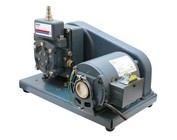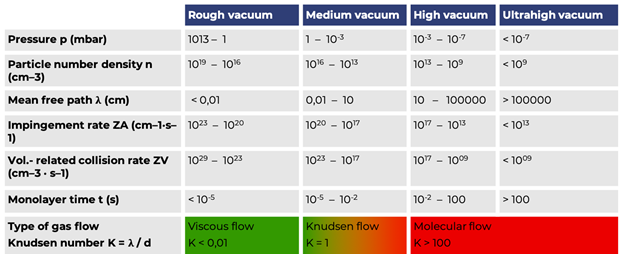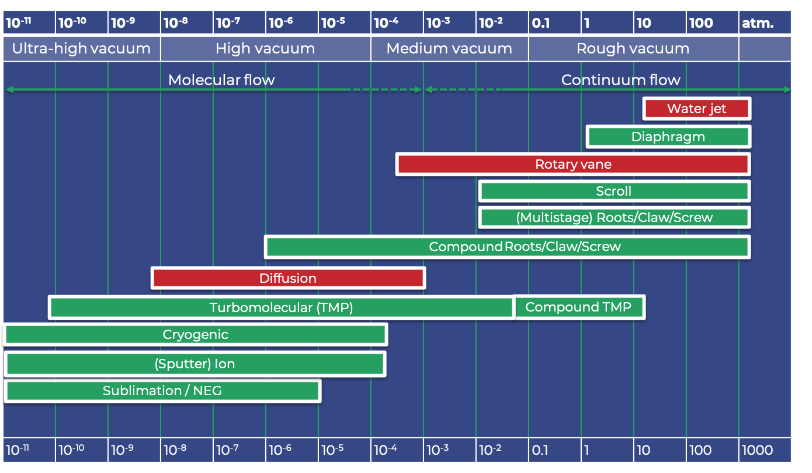You have no items in your shopping cart
Vacuum Pump Buying Guide
- Posted on
- Posted in Buyers Guides, Vacuum Pump
- 1

A quick summary of the factors to consider when purchasing a vacuum pump
How to Select a Vacuum Pump
A vacuum pump is used to create a negative pressure (vacuum) within a vessel or system. There are 3 main factors to determine which vacuum pump will work best for your application.
- Depth of vacuum
- Material or Process Requirements
- Flow Speed
Depth of Vacuum
Vacuum Depth and its characteristics are split into the 4 columns below

The vacuum depth and flow requirements will determine the conductance of your system
For most lab applications, vacuum in the “rough” vacuum range (between atmospheric pressure and 1 mbar/0.7 Torr) will be sufficient.
Operations that use vacuum to move liquids, such as vacuum filtration or liquid aspiration, rely on pressure differentials and need only modest vacuum. These activities can typically be accomplished with a vacuum no deeper than 100 mbar. The vacuum level necessary for evaporative applications, on the other hand, will often require significantly greater vacuum depths depending on the solvents involved and the conditions of the application (temperature, other solvents present, etc.)
Material or Process requirements
Certain processes or applications pose a risk of contamination from the pump to the process or from the process to the pump. Typical contaminates of concern to the pump include corrosive or reactive gasses, condensable vapors, and liquids.
For vapor streams which contain corrosive or reactive gases a diaphragm pump is the preferred option. The diaphragm pump has chemical resistant internals which prevent any working parts contacting the gases. The exhaust can be vented to a hood or chemically reduced or absorbed.
Some applications are very sensitive to the contamination from the pump. The typical contaminant is the oil that the pump uses to create vacuum. At a sufficient depth of vacuum the oil vapor molecules from the vacuum pump may travel in the reverse direction of flow “back streaming” and could contaminate your process or application.
These contaminates can be partially eliminated by using vacuum traps, inlet filters, woulff bottles, etc.
Use the chart below to select the correct type of vacuum pump. The “X” axis represents the depth of vacuum and the “Y” axis represents the ability of the pump to handle contamination with the most sensitive pumps on the bottom.

Green represents “dry” vacuum generation pumps
Red represents “wet” pumps which use a working fluid to create a vacuum and pose a contamination risk
Flow Speed
The speed of the vacuum pump is the last factor to consider. For simply creating a vacuum on a sealed vessel or chamber the speed of pump should be directly correlated to the size of the system to be evacuated. A system which off-gasses or evolves non-condensable vapors is more complicated but should also be considered and estimated. A pump that is undersized will take a long time to reach the desired vacuum level or may not reach the depth at all. One should consider the flow at the desired vacuum level. As the level of vacuum is increased the speed of evacuation or flow is reduced. To achieve the depth of vacuum and flow it might be necessary to use two pump types together on a single system.
Check out our additional blogs on vacuum pumps for more info:


Comments
Be the first to comment...